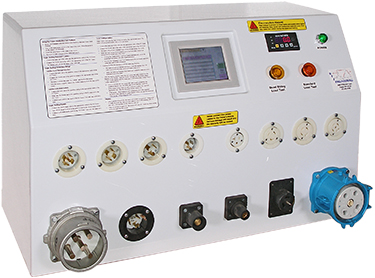Rick Christopherson
Senior Member
Years ago I was providing portable power distribution for a festival on an island in the middle of the Mississippi river. At one of the sub-sites, I had a brand new (drop-shipped from the factory to the project site) L21-20 extension cable feeding into a quad string (3, 120 V quad boxes on a 3-phase, 5-wire cable). This 5-wire extension cable had a floating (disconnected) neutral, so all downstream circuits also had a floating neutral.mull982 said:Can you give an example of this. I am not seeing it with voltage division.
I finished the setup at 2 O?clock in the morning and checked each of the outlets with an Edison ?idiot tester?. I got ?red lights? on one of these quad strings, but it was too late at night to troubleshoot it without any light to see by. So I locked the system down and notified event staff that the site could not be energized until I got back in the morning.
Well, the next morning, a vendor showed up before me, and he knew enough about generators and our distribution system, that he fired up the generator and bypassed all of my make-shift lockouts. As soon as he did, he fried his own $1500 frosty machine because it received nearly 208 volts instead of the 120 volts it needed.
Here?s why:
Phase A had no load, so it didn?t come into play.
Phase B had a whole bunch of light strings, so it was a low-impedance circuit.
Phase C had his frosty machine.
The floating neutral resulted in the voltage from phase B to Neutral (his lighting circuit) to be nearly zero volts because of the low-impedance path. This resulted in Phase C to neutral to be nearly 208 volts. The reason why this is called a ?floating neutral? is because which ever circuit (phase) is pulling the hardest on the neutral will dictate what the voltage will be, with respect to the other phases. The actual voltage can be determined by voltage division and the respective impedances. Instead of having 2 independent 120 volt circuits between phase and neutral, you have 2 series loads between phases, and the neutral falls where it falls.
This exact same scenario happened on two different project sites that very same week, with brand new cables. It was the culminating reason why I decided then and there to develop my power distribution tester. The other site destroyed a $5000 cooling system, and my client was on the hook for that damage because no one tested the circuits before releasing the site for customer use.

